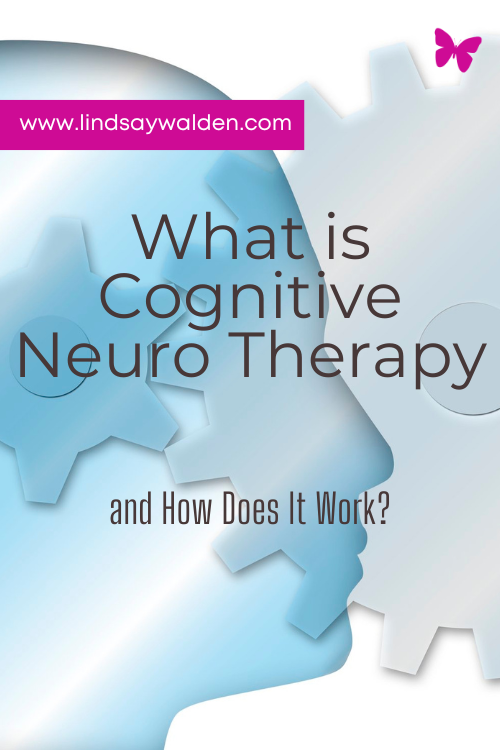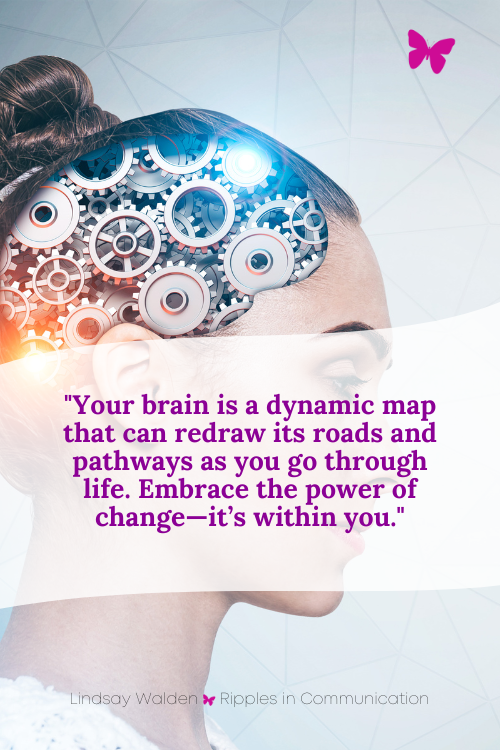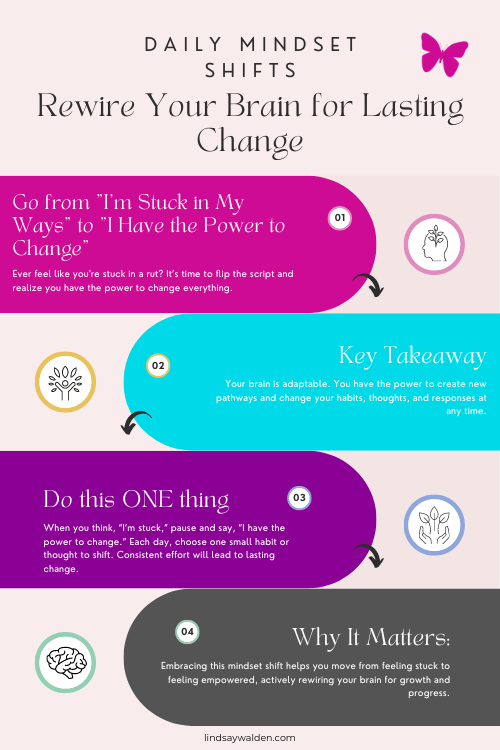How to Create Lasting Change Using Cognitive Neuro Therapy
Harnessing Cognitive Neuro Therapy: A Pathway to Lasting Change
Ever wondered why some people seem to bounce back from life’s challenges while others get stuck in a rut? The answer might lie in a fascinating concept called neuroplasticity. It’s not just a buzzword—it’s the brain’s way of saying, “I can change, I can grow, and I can heal.” And here’s the best part: this isn’t just something that happens when you’re young; it’s true for all of us, at any age. So, let’s dive into what neuroplasticity is and how it can be a game-changer in therapy.
Tired of letting your emotions take over? Ready to break free from emotional overwhelm and take control? Discover your Emotional Neutrality Score in just 7 questions! Are you mastering your emotions or getting lost in the heat of the moment? Get a FREE all-in-one eBook that includes a quiz to assess your Emotional Neutrality Score, along with personalized insights and actionable strategies to help you gain clarity, communicate better, and build stronger relationships—starting today!
CLICK THE BUTTON BELOW to enter your email and receive your downloadable guide with everything you need to take the quiz, understand your score, and improve your Emotional Neutrality!
What Exactly is Neuroplasticity?
Neuroplasticity is a fancy term that describes your brain’s incredible ability to reorganize itself. Imagine your brain as a dynamic map, one that can redraw its roads and pathways as you go through life. Whether you’re learning a new skill, coping with stress, or healing from emotional pain, your brain is constantly adapting. This adaptability is what makes lasting change not just possible but inevitable when you’re committed to the process.
Traditionally, it was believed that the brain’s structure was set in stone once we reached a certain age. But thanks to decades of research, we now know that our brains remain flexible and capable of change throughout our entire lives. This flexibility is driven by the brain’s capacity to strengthen or weaken the connections between neurons (the cells in our brain) based on repeated experiences and behaviors. In simple terms, the things we think, feel, and do can literally reshape our brains.
There are two main types of neuroplasticity: structural and functional. Structural plasticity is about the brain’s ability to change its physical structure—like increasing the number of connections between neurons. Functional plasticity, on the other hand, is about the brain’s ability to shift functions from one area to another, which is often seen after injury or damage. Both types are crucial in the therapeutic process and offer a powerful framework for understanding how change can happen in therapy.
Learn what Cognitive Neuro Therapy is and how it works to transform your mental health. This blog post breaks down the concepts of neuroplasticity and how they’re used in therapy to help you overcome challenges and achieve lasting change.
4 Reasons Why Neuroplasticity Matters in Therapy
You might think therapy is just about talking things out, but there’s so much more happening beneath the surface. When you’re working with a therapist, especially in Cognitive Neuro Therapy, you’re actually engaging in a process that reshapes your brain. It’s not just about understanding your problems; it’s about changing the very way your brain works. Here’s how neuroplasticity plays a pivotal role in this process:
1. Rewiring Negative Thought Patterns
Have you ever felt like you’re stuck in a loop of negative thoughts? It’s like your brain has a default setting that’s hard to shake off. You’re not alone in this; it’s something many people experience. But here’s the good news: you don’t have to stay stuck. Cognitive Behavioral Therapy (CBT), for example, is a powerful tool that leverages neuroplasticity to help you break out of those negative patterns. By challenging those thoughts and replacing them with healthier ones, you’re creating new, stronger pathways in your brain. Over time, these new pathways become the default, effectively replacing the old, negative ones.
2. Managing Emotions with Greater Ease
Life is full of ups and downs, and sometimes our emotional responses can feel overwhelming. Whether it’s stress, anxiety, or frustration, these emotions can take a toll on our mental and physical well-being. But here’s where therapy can make a big difference. Techniques like mindfulness and relaxation exercises, which are often taught in therapy, help your brain learn to respond differently to stress. Regular practice of these techniques can lead to changes in the brain regions involved in emotional regulation, like the prefrontal cortex (the part of your brain that helps you make decisions and stay calm) and the amygdala (the part that triggers the fight or flight response). With time and practice, you’ll find that your emotional reactions become less intense and more manageable.
3. Healing from Trauma
If you’ve experienced trauma, you know how deeply it can affect every aspect of your life. Trauma can leave you feeling stuck, as if the past is constantly replaying in your mind. But therapy, especially approaches like EMDR (Eye Movement Desensitization and Reprocessing) and Trauma Focused Cognitive Behavioral Therapy (TF-CBT), can help you process those painful memories. These therapies use the principles of neuroplasticity to help your brain reprocess and reframe traumatic experiences, reducing their emotional impact. It’s like your brain is rewiring itself to view those memories in a new, less painful light, allowing you to move forward with your life.
4. Building Resilience and Optimism
Resilience isn’t something you’re born with—it’s something you can build. Just like working out strengthens your muscles, therapy can help you strengthen your brain’s ability to bounce back from adversity. By focusing on positive emotions and coping skills in therapy, you’re reinforcing the neural pathways that support a more optimistic and resilient mindset. Techniques such as positive psychology interventions, gratitude practices, and solution focused therapy encourage the development of these pathways. Over time, your brain becomes better equipped to handle challenges, and you start to feel more hopeful and empowered in the face of life’s difficulties.
Learn how Cognitive Neuro Therapy can help you improve your mental health. This post breaks down how neuroplasticity works in therapy, offering actionable insights to help you on your journey to better mental wellbeing.
The Power of a Strong Therapeutic Relationship
While these techniques are powerful on their own, they’re just one piece of the puzzle. The real magic happens when you combine these tools with a strong, supportive relationship with your therapist. In my practice, I blend the latest neuroscience tools with traditional therapy approaches to create a space where you can feel safe, heard, and understood. This connection isn’t just about feeling good—it actually helps rewire your brain’s social and emotional circuits, making real change possible.
Research has shown that the therapeutic relationship itself can be a powerful catalyst for change. When you feel understood and supported by your therapist, it creates a safe environment where your brain can explore new ways of thinking, feeling, and behaving. This relational aspect of therapy helps foster greater trust, emotional stability, and a willingness to embrace change. It’s not just about learning new skills; it’s about experiencing a new way of relating to yourself and others.
Your brain has the incredible ability to reshape itself throughout your life. This quote inspires you to embrace change and harness the power of neuroplasticity. Perfect for anyone looking to unlock their potential and make lasting changes.
Challenges and Considerations in Neuroplasticity
Of course, neuroplasticity isn’t just about the good stuff. The same flexibility that allows your brain to grow and adapt can also reinforce negative patterns if we’re not careful. This is why consistency and intention are so crucial in therapy. The brain is always changing, but without the right guidance and support, it can just as easily reinforce harmful patterns as it can foster positive growth.
It’s also important to remember that neuroplasticity isn’t a one-size-fits-all solution. Everyone’s brain is different, and factors like genetics, environment, and life experiences all play a role in how your brain responds to therapy. This means that the process of change will look different for each person. In my work as a Cognitive Neuro Therapist, I tailor my approach to meet your unique needs, ensuring that the interventions and strategies we use align with your specific goals and circumstances. This personalized approach helps maximize the potential of neuroplasticity, allowing you to make meaningful progress in therapy.
Embracing the Potential for Change
The concept of neuroplasticity offers a powerful framework for understanding the transformative potential of psychotherapy. By recognizing the brain’s inherent ability to change and adapt, both therapists and clients can approach the therapeutic process with a renewed sense of hope and possibility. With consistent effort, tailored interventions, and a strong therapeutic alliance, neuroplasticity can be harnessed to create lasting, meaningful change in the lives of those seeking therapy.
In the ever evolving field of mental health management, the blending of neuroscience and psychotherapy offers a new approach to the process of going from where you are to where you want to be. As our understanding of neuroplasticity continues to deepen, so too will our ability to help you heal, grow, and thrive in ways that were once thought impossible.
So, if you’re ready to take control of your life and make real, lasting changes, let’s talk. Together, we can harness the power of neuroplasticity to help you move past your challenges and toward a brighter, more fulfilling future. The journey isn’t just possible—it’s within your reach, and it starts with one brave step forward.
Feeling stuck in your ways? This powerful mindset shift will help you realize that you have the power to change and grow. Learn how to rewire your brain and create new pathways for personal transformation. Start your journey to a more empowered you today!








